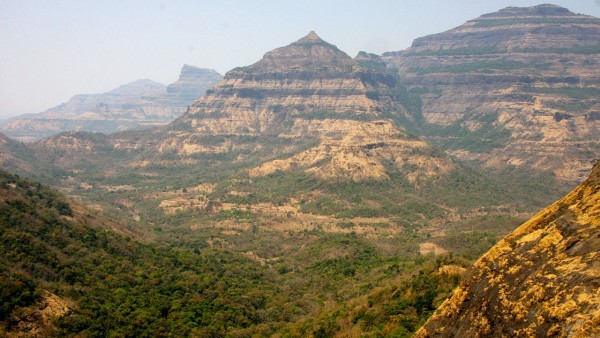Scientists are now suggesting that it is not only just a huge asteroid impact that wiped out dinosaurs from the face of the planet 66 million years ago but this extinction event apparently coincided with another disaster that ultimately caused the dinosaurs to disappear forever.
A team of researchers reveals new compelling evidence about how a seismic shock originating from that asteroid impact triggered or accelerated massive volcano eruptions in India that lasted for at least 100,000 years.
This disastrous combination of an asteroid impact and volcanism also enshrouded the whole planet with thick dust clouds and toxic fumes that lead to the extinction of dinosaurs and also a myriad species of terrestrial and marine animals.
Researchers have dated lava flows in the Deccan Traps in India that revealed evidence of how slow eruptions occurred simultaneously during the time of the asteroid impact where eruptions doubled their lava output in the next 50,000 years.
According to lead author of the study and geochronologist Paul Renne from the Berkeley Geochronology Center, this amount of lava pouring incessantly is estimated at half a million cubic kilometers that is enough to cover the entire planet with lava of a depth of one meter or so, which is truly massive.
There has been scientific debate over the effects of these global events as other scientists believe that these volcanic eruptions played little or no part in the massive dinosaur die-off and others also claim that this massive extinction of many species with this series of volcanic eruptions along with a huge asteroid impact was apparently just being another step in the process.
Renne who is also an earth and planetary science professor from the University of California, Berkeley also adds that based on the dating of these lava flows, this is solid evidence of how volcanism and the impact happened within 50,000 years of this massive animal extinction, which makes it impossible to distinguish the events as ultimate causes of this die off as both were coinciding with each other. Atmospheric effects are also difficult to differentiate from each other as both events happened at the same time.
According to co-author of the study Mark Richards from the University of Berkeley who originally proposed the theory of how an asteroid impact reignited volcanism in the Deccan Traps, the connection between these events along with the extinctions is making it harder to deny the correlation between each other as major volcanism clearly plays a crucial role in the die offs.
This new study is published in the journal Science.



























